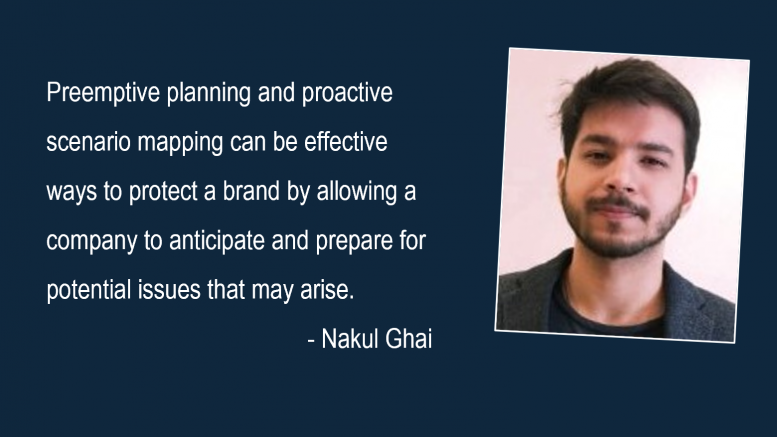A lot of times, brands react to a crisis more than pre-empt crisis and that’s what makes all the difference.
We all know that reacting to a crisis can be more difficult because it can be harder to predict and control the outcome. When a crisis happens, a company may be forced to take actions that it would not have chosen otherwise, and that can damage its reputation and bottom line. In contrast, pre-empting a crisis can help a company to take steps to minimize the potential damage and protect its reputation.
However, I agree that in most cases, it’s not possible to pre-empt a crisis, and sometimes the crisis is out of the control of the company, such as a natural disaster, or an unexpected event. But a well-prepared and thought-out crisis plan with predictive scenario mapping can help a company to react quickly and effectively, which can minimize the damage and help the company to recover more quickly.
It is here that pre-emptive planning and scenario mapping comes into play.
Preemptive planning and proactive scenario mapping can be effective ways to protect a brand by allowing a company to anticipate and prepare for potential issues that may arise. By conducting a thorough analysis of the current market and potential risks to the brand, a company can develop contingency plans to mitigate any negative effects on the brand. This can involve creating crisis communication plans, identifying key stakeholders, and developing messaging to be used in the event of a crisis. Additionally, actively monitoring the market and staying up to date on industry trends can help a company stay ahead of potential issues and proactively address any potential threats to the brand.
Let me explain this with the help of the recent incident on a New York-Delhi Air India flight, wherein a heavily inebriated co-traveler urinated over a senior citizen woman. I need not dwell on how pathetic, harrowing and traumatic this experience would have been for the lady who despite this, was made to sit in the urine-soaked seat for the remaining part of her journey. The laxity and mishandling of the episode caught the brand ‘Air India’ in a crisis trap and raised several questions about the customer experience and image that it promises to its customers. The CEO of Air India has already issued an apology for the airline’s failure in responding timely and effectively to the incident and assured that it was reviewing its policy around serving alcohol on flights.
The point here is not to get into how this crisis was managed or how it could have been managed better.
But, to see what is it that the other brands in the aviation sector can learn from this episode? What could be the next steps for them other than just tracking and monitoring the industry news and developments?
Well, this incident must raise the below questions for the other players in the space:
- If it could happen to Air India, it could happen to us as well?
- In such a crisis, what is it that we would do? How will we ensure proper handling of the incident?
- What are other similar/likely incidents that could occur in this direction?
- Do we need to alter/bring certain policies in place to take control of such incidents?
- Do we have a proper mechanism in place to respond to such incidents?
These questions need to be addressed in advance before they catch themselves in a similar situation.
It’s therefore important to proactively think of as many possible scenarios in mind so that we don’t up feel lost and directionless when an actual bug hits us. Not just playing out scenarios, it’s also important for us to curate an effective mechanism and communications plan for each scenario, to be able to take better hold of a similar situation as and when it happens.
As communications professionals, it’s also important for us to note that crisis management is not just about damage control, but also about preventing similar situations in the future. Therefore, after the crisis is handled, it is crucial to conduct a thorough analysis of the situation, to identify what went wrong and what should be done differently in the future.
The views and opinions published here belong to the author and do not necessarily reflect the views and opinions of the publisher.



Be the first to comment on "Don’t wait for a crisis to hit: Pre-emptive planning can protect your brand"